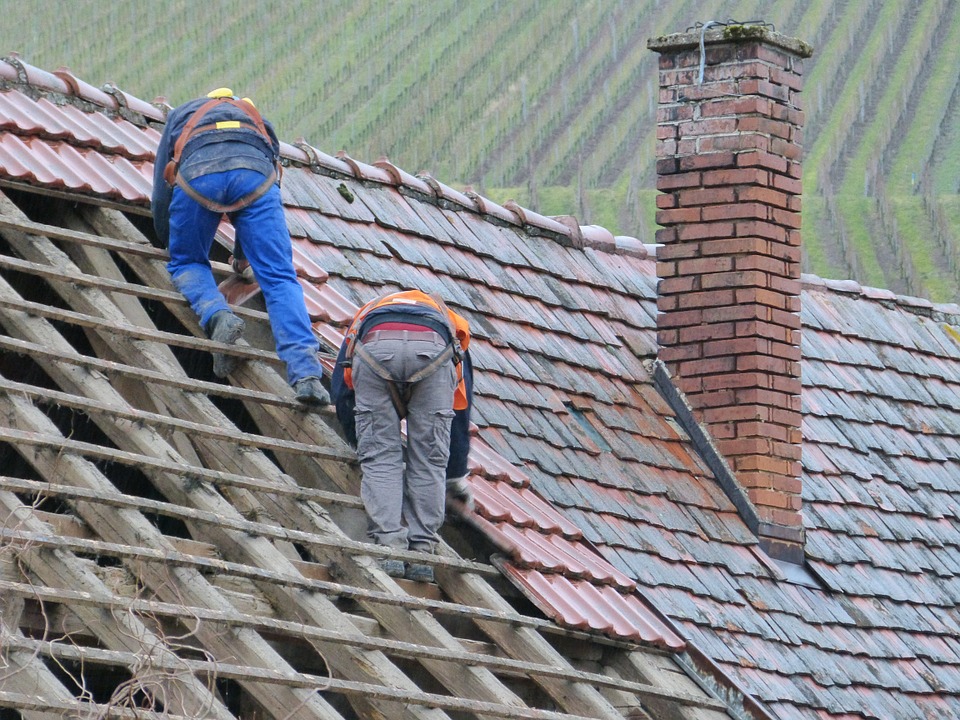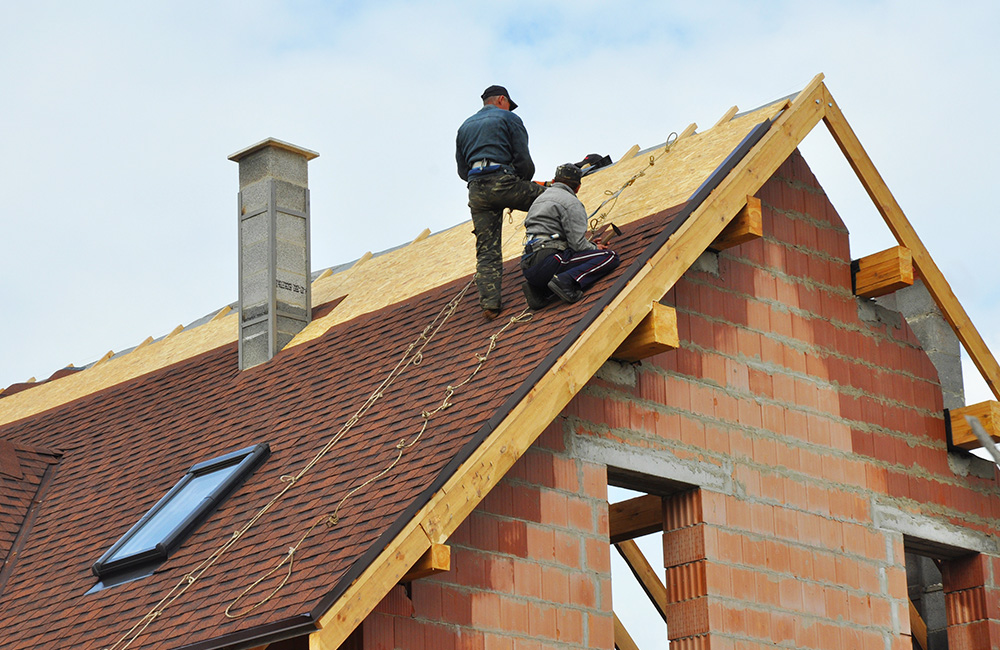Roofing Companies Oahu: Top-Rated Roofers for All Roofing Projects
Roofing Companies Oahu: Top-Rated Roofers for All Roofing Projects
Blog Article
Recognizing the Various Sorts Of Roofing Systems: A Comprehensive Guide for Homeowners
With a selection of options-- varying from the conventional gable to the modern flat-- each kind offers unique benefits and challenges that ought to align with the homeowner's environmental factors to consider and specific needs. As we explore the ins and outs of different roof covering kinds, it becomes noticeable that one size does not fit all; the appropriate option might surprise you.
Gable Roof Coverings
Gable roofings, characterized by their triangular shape, are among the most prominent roof covering styles because of their simplicity and performance in losing water and snow. This layout features two sloping sides that satisfy at a ridge, permitting reliable drainage and minimizing the risk of water build-up. The high pitch generally connected with gable roofing systems boosts their ability to deal with hefty rainfall, making them ideal for numerous climates.
Along with their functional advantages, gable roofings offer visual adaptability. They can be adjusted to numerous architectural designs, from traditional to contemporary homes. The design can also accommodate additional features such as dormer windows, which enhance natural light and air flow in the attic space.
Additionally, saddleback roofs provide sufficient area for insulation, adding to energy performance. Homeowners can select from a variety of roofing materials, including asphalt roof shingles, metal, and ceramic tiles, additionally improving modification options.
In spite of their advantages, saddleback roofs may call for added support in areas prone to high winds or heavy snowfall. On the whole, the gable roof remains a favored choice as a result of its mix of capability, durability, and visual allure.
Apartment Roofs
Level roofings are frequently identified for their minimal design and useful applications, particularly in commercial and industrial setups (oahu roofing). These roofs feature a nearly straight or horizontal surface area, which enables easy building and functional area use. While they might do not have the aesthetic appeal of pitched roofs, level roofing systems use numerous benefits, especially in metropolitan settings where making the most of space is vital
One of the primary benefits of flat roofs is their ease of access. Home owners can use the roofing system area for various purposes, such as roof gardens, terraces, or solar panel installations. Additionally, flat roofings are normally extra economical to preserve and set up compared to their sloped equivalents, as they need fewer materials and labor.
Typical materials used for level roof coverings include built-up roof covering (BUR), changed asphalt, and single-ply membrane layers, each offering distinctive advantages. In general, flat roofings offer as a functional and versatile selection for many property owners and companies alike.
Hip Roof Coverings
Hip roof coverings are defined by their sloped sides that merge on top, creating a ridge. This style is unique from gable roofing systems, as all 4 sides of a hip roof slope downwards toward the wall surfaces, offering a much more secure structure. The angle of the slopes can differ, permitting adaptability in building looks and performance.
One of the key benefits of hip roofs is their capacity to hold up against hefty winds and adverse weather. The sloped surfaces enable far better water drainage, decreasing the threat of leaks and water damages. Additionally, hip roofing systems supply raised attic room space, which can be made use of for storage or perhaps converted into comfortable areas.
However, building a hip roofing system can be a lot more complicated and pricey than less complex roof kinds, such as saddleback roofs. The added material and labor included in creating the inclines and making certain correct structural stability can result in higher costs. Regardless of these drawbacks, lots of homeowners prefer hip roofings for their sturdiness, visual appeal, and potential for energy efficiency.
Mansard Roofing Systems
Mansard roofing systems, typically recognized by their distinct four-sided layout, function 2 slopes on each side, with the lower incline being steeper than the top. This architectural style, stemming from France in the 17th century, Clicking Here is not just cosmetically attractive however useful, as it takes full advantage of the functional area in the upper floorings of a structure. The high reduced incline enables more clearance, making it an excellent choice for lofts or attics, which can be transformed right into living rooms.
Mansard roof coverings are identified by their flexibility, suiting numerous building styles, from typical to contemporary. They can be built with different materials, including asphalt tiles, slate, or steel, giving homeowners with an array of options to suit their budget plans and preferences. Additionally, the design permits the combination of dormer windows, improving natural light and ventilation in the upper levels.
However, it is important to consider the possible drawbacks. Mansard roofs might require more maintenance as a result of the intricacy of their style, and their high inclines can be testing for snow and rain overflow. Overall, mansard roofings integrate sophistication with practicality, making them a preferred option amongst house owners looking for distinctive building attributes.
Shed Roof Coverings
As homeowners progressively look for simplicity and performance in their building layouts, shed roofing systems have emerged as a preferred option. Characterized by a single sloping plane, a shed roof covering presents a minimal aesthetic that matches various home styles, from contemporary to rustic.
One of the primary advantages of a shed roofing is its simple building and construction, which typically equates to lower labor and product expenses. This style permits reliable water drain, decreasing the danger of leaks and water damages. Furthermore, the vertical incline provides adequate space for skylights, enhancing natural light within the interior.
Dropped roofings also supply convenience in regards to use. They can be successfully incorporated into enhancements, garages, or outdoor structures like pavilions and sheds. Moreover, this roofing design can suit various roof covering products, including metal, asphalt roof shingles, or even eco-friendly roofings, lining up with eco-friendly initiatives.
However, it is necessary to consider local environment problems, as hefty snow loads might require modifications to the roofing system's angle or structure. Generally, shed roof coverings offer a practical and Visit This Link cosmetically pleasing alternative for property owners looking to optimize performance without endangering style.
Conclusion


Gable roofs, characterized by their triangular form, are amongst the most prominent roof designs due to their simpleness and efficiency in losing water and snow. oahu roofing. The high pitch frequently linked with gable roofs boosts their capacity to handle heavy rainfall, making them ideal for numerous environments
While they may lack the visual allure of pitched roofing systems, flat roofing systems supply numerous advantages, particularly in urban atmospheres where maximizing space is crucial.

Report this page